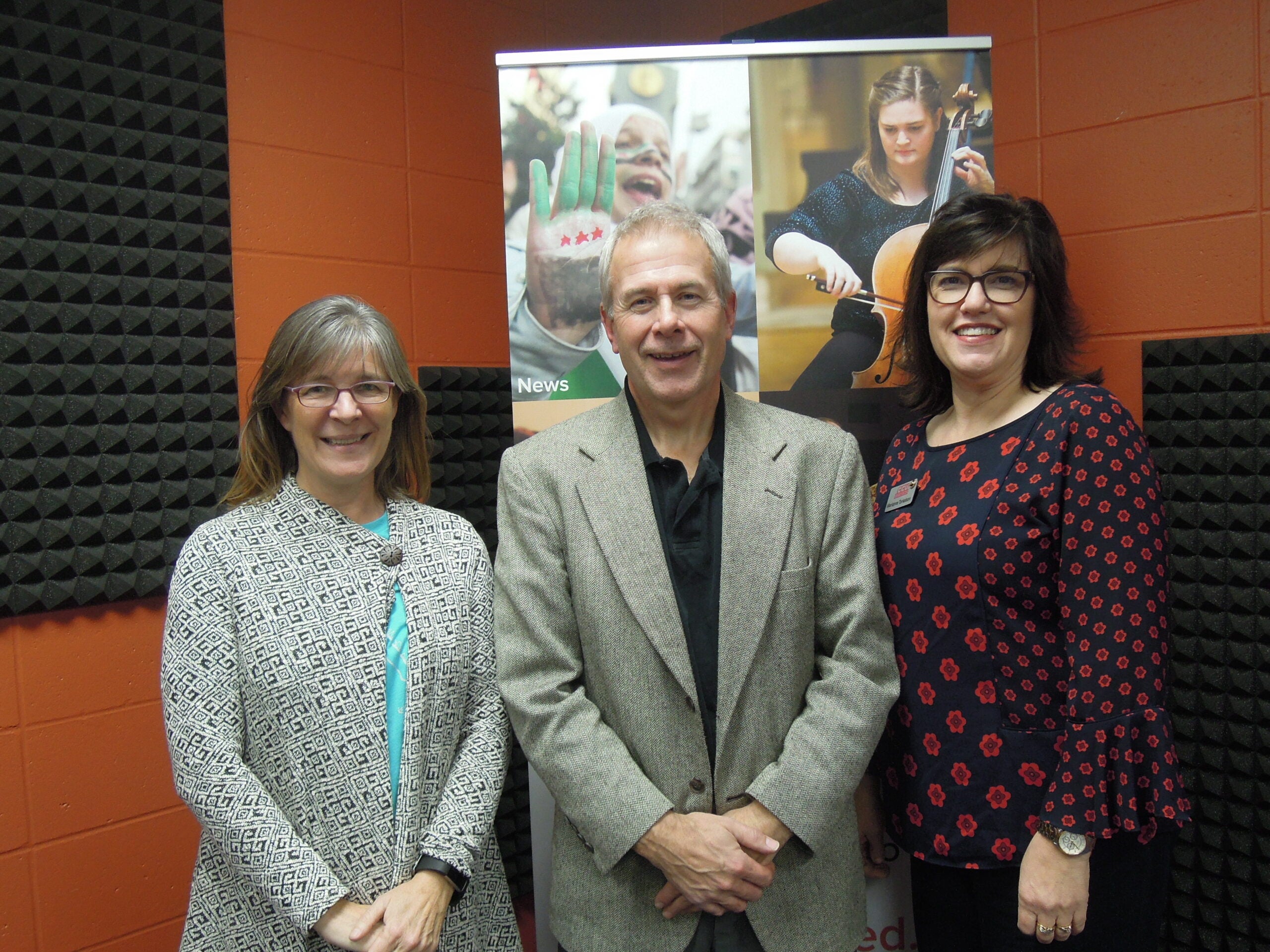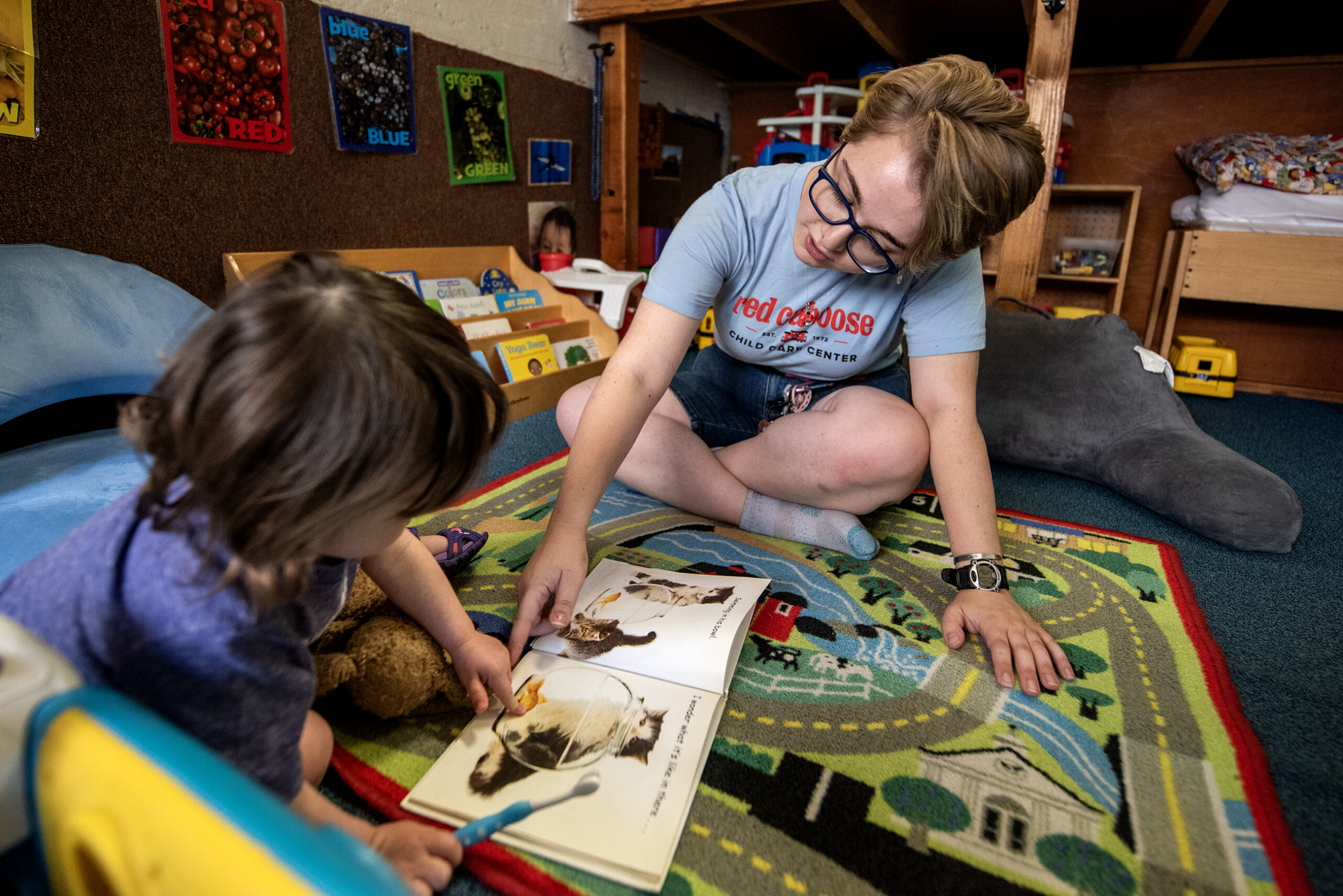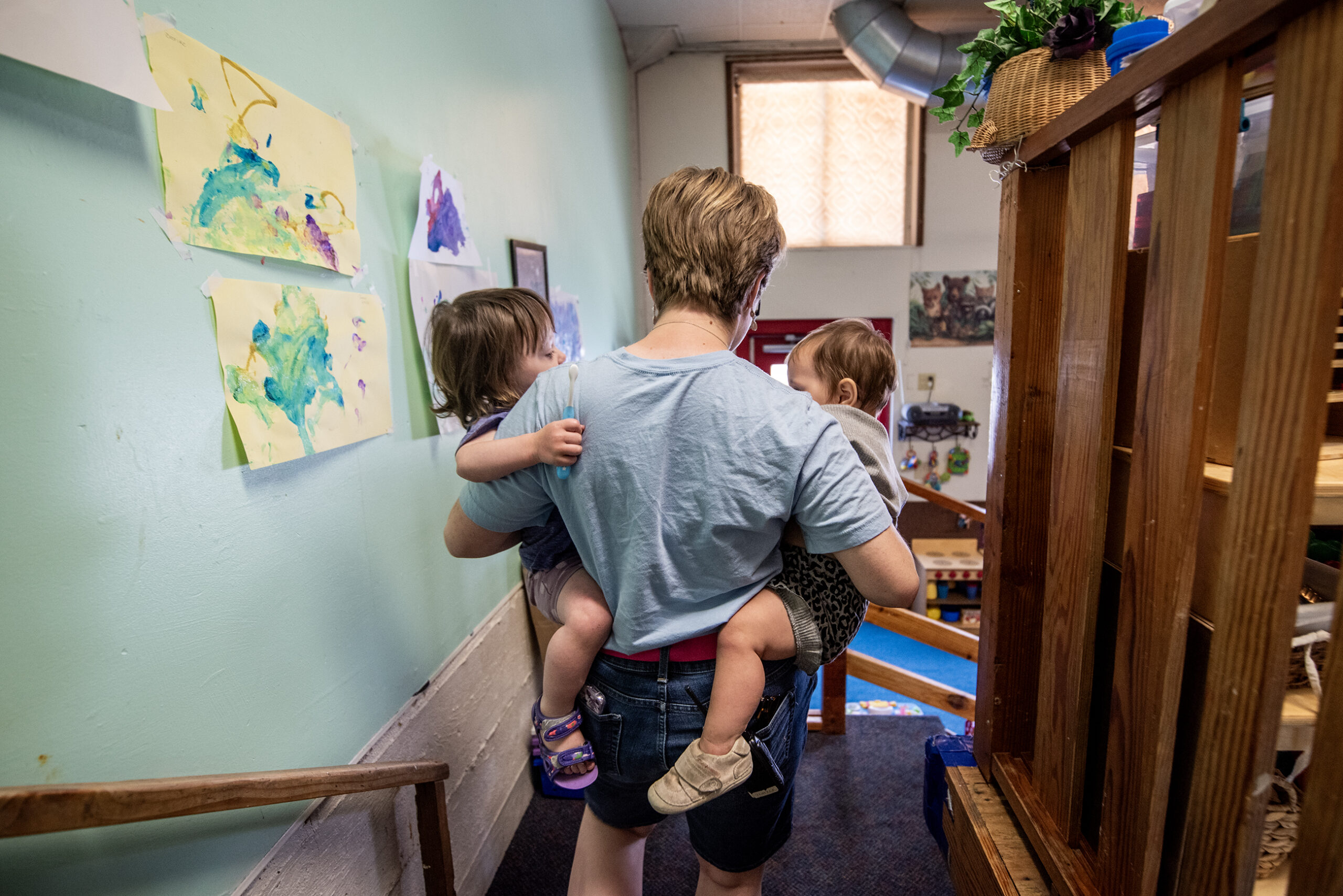Employers in western Wisconsin are working to improve access to child care for rural communities as a way to support the local workforce.
Organic Valley, Vernon Memorial Healthcare and several other local employers helped create a shared services network for child care providers in Vernon County that could begin in early 2019.
“All of these folks have been at the table to sort of say what do you need for support? How can we support this initiative as it moves forward? And it’s been a remarkable experience to see the community really rally around this,” said Ruth Schmidt, executive director of the Wisconsin Early Childhood Association, which is helping lead the project.
The project was awarded a four-year grant from the Medical College of Wisconsin in November 2017. The network is designed to help keep child care programs in business by offering support services and sharing costs.
“Instead of having five programs employing a part-time bookkeeper, the network would have a bookkeeper that does the bookkeeping for all of the programs and does the purchasing for all of the programs,” Schmidt said.
She said the county will also fund a relief squad through the network, offering back-up staff in case a provider is sick or unable to operate.
Schmidt said the network hopes to begin enrolling child care providers by the beginning of 2019.
Chris Hardie, executive director of economic development agency The 7 Rivers Alliance, said the project is just one example of the way more businesses are investing in child care in response to a shortage of workers.
“The lack of child care is keeping people out of the workforce or forcing them to work part time and that keeps the challenge of finding workers even greater than it is,” Hardie said.
Hardie said access to affordable child care was one of the top challenges businesses listed in a recent study on the future of the workforce in the Coulee Region.
A 7 Rivers Alliance survey of regional businesses executives found 53 percent of respondents said they may be willing to subsidize employee child care if it would guarantee availability.
Hardie said employers are looking at child care as a recruitment tool.
“The first question that somebody has if they’re going to move to this region after they’re offered a job is, what’s the availability of child care? And if you’re an employer and can’t answer that or don’t have a good answer for that, it doesn’t give you an advantage when it comes to recruiting that person,” Hardie said.
Hardie said local studies have also found that a lack of stable child care is a hidden cost for businesses.
A survey of working parents in Jackson County recently found 51 percent of respondents spent at least an hour making child care arrangements while at work.
Applying that to economic development numbers from the county, Hardie estimates that time comes at the cost of $200,000 per month in lost productivity for local businesses.
“That ought to raise some eyebrows and get the attention of employers to say we’ve got to come up with a way where we can help to be a partner in solving the child care shortage,” Hardie said.
Some employers in Jackson County are already working to address the issue. Co-op Credit Union in Black River Falls recently helped start a committee of businesses, county agencies and child care providers to study the availability of child care.
Marianne Torkelson, vice president of business development and training at the credit union, said Co-op Credit Union started organizing the group after hearing concern from several employers.
“What started as a lobby conversation with a couple of businesses in Jackson County kind of grew into this grassroots effort to really look at what are we having for child care issues and how is it impacting our workforce,” Torkelson said.
Torkelson said the group recently completed the survey of working parents and is still working to collect information from child care providers and employers. But the group hopes to eventually find creative solutions to supporting more child care options in the county.
– Hope Kirwan
Featured in this Show
-
Wisconsin's Child Care Worker Shortage Fueled By Low Wages, No Benefits
Despite efforts to produce more licensed child care workers in Wisconsin, it may take higher wages and better benefits to lure more people into the field.
Wisconsin licensed child care centers — especially in rural areas — continue to struggle to attract and retain workers to care for children.
“It’s very common for us to hear from child care centers that a room that they once had open to care for four infants is now closed because they could not find qualified staff,” Jodi Widuch, the executive director of The Parenting Place, told WPR’s “Newsmakers.”
The La Crosse-based regional agency provides free services and referrals to child care providers and families with the goal of improving the development of young children.
“Despite how incredibly important that care giver’s role is for young children, it is not gainful employment in the state of Wisconsin right now,” Widuch said. “That’s really unfortunate, because we need highly qualified folks to be caring for young children. They’re very vulnerable. What happens to them early in their years, both good and bad, stays with them for a lifetime.”
She said low hourly wages and a lack of benefits are the main reasons for the child care worker shortage in the state.
“Child care centers have a very hard time recruiting qualified staff members. Their biggest competitors are school districts, because those early childhood degrees are coveted by both public schools and child care. The compensation packages — you just can’t compare them — along with summers off when you’re working for a school district,” Widuch said.
The Wisconsin Department of Children and Families licenses and regulates child care in the state.
“(The) child care worker shortage is a problem many states are facing due to multiple factors, including the economy, regulatory modifications and changes in family dynamics,” said Gina Paige, a DCF spokeswoman. “In Wisconsin, we have seen larger withdrawals of providers in rural regions. We have heard anecdotally that other industries in those areas are seeing worker shortages, but we don’t have any concrete data to fully support that.”
According to DCF, there were 3,985 licensed child care centers statewide in 2018, versus 5,026 in 1998. While the number of centers is down, their capacity has increased. In 1998, Wisconsin’s child care centers had 134,000 slots, whereas today there are more than 200,000 slots.
Paige noted that the quality of care has also improved.
“In February 2013, only 56.1 percent of children were enrolled in programs rated three stars or higher compared with 74.4 percent in July 2018,” she said. “During the same period, enrollment in high-quality four and five star programs increased from 14.3 percent to 27.2 percent.”
While DCF isn’t involved in telling individual child care centers what wages or benefits they should provide their employees, the agency is aware of the challenges of hiring and retaining workers to the field.
To address those challenges, DCF has worked to create programming to support those working in child care, Paige said.
“For instance, DCF funded the REWARD Wisconsin Stipend Program. It rewards workers in the child care and early education field who have reached specified educational levels and stay in the field. In the last fiscal year, REWARD supported 2,375 individuals with wage stipends that average $540 per year,” Paige said.
Many Wisconsin school districts also have programs designed to make it easier for high school students to earn a certificate that allows them to work in a licensed child care center.
Britta Rotering is a family and consumer sciences teacher at Gale-Ettrick-Trempealeau High School, or GET. She is one of 110 teachers in the state with a special license from the Wisconsin Department of Public Instruction to teach advanced child care courses.
Echoing both Widuch and Paige, Rotering said there is a critical shortage of licensed providers and a very high turnover of workers in the industry.
“It’s very hard for these centers, especially small centers to keep qualified people,” said Rotering. “Unfortunately, there are a lot of centers that will try to take the employees from other centers because it’s just a battle to get someone who is reliable and licensed appropriately.”
At GET, Rotering has seen quite a bit of interest in the advanced child care courses. They average about 75 students in the various classes in a typical school year, she said. It takes two to three years to earn the certificate.
But given the low wages and lack of benefits in the child care industry it’s hard to say if the high school programs are having much of a long-term impact on the child care workers shortage.
Rotering said many students in the advanced program want to be teachers, psychologists or pediatricians — careers that require knowledge about young children.
“I would say about 20 (GET students) come out with their credential each year. Many of those do not plan to use them, or they don’t use them right away. Within five years of graduation in my program, I would say that 70 percent of them actually use the credential by working in a child care setting,” she said.
Episode Credits
- Hope Kirwan Host
- John Davis Producer
- Marianne Torkelson Guest
- Ruth Schmidt Guest
- Jodi Widuch Guest
- Chris Hardie Guest
Wisconsin Public Radio, © Copyright 2025, Board of Regents of the University of Wisconsin System and Wisconsin Educational Communications Board.





